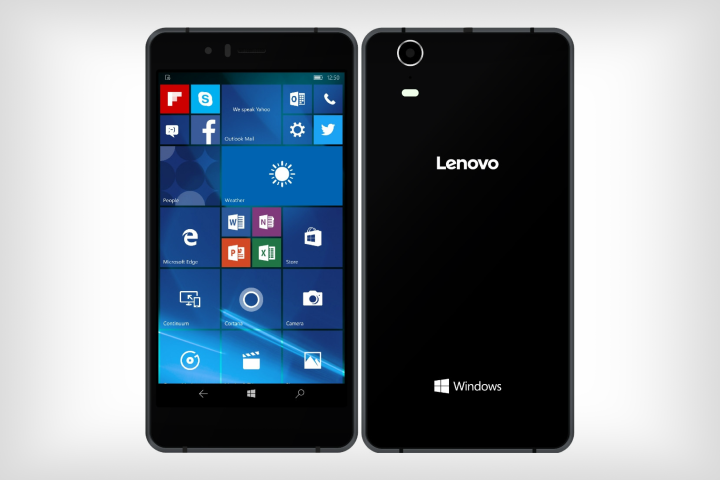
Made in partnership with Japanese technology conglomerate SoftBank, the phone features a 5-inch, 1,280 x 720 resolution display, with a 5-megapixel camera sitting above and an 8MP shooter with LED flash found around back. The only hardware buttons you will find are the power and volume buttons, as the SoftBank 503LV, similar to other Windows 10 Mobile phones, feature software keys.
Under the hood, a 1.5GHz octa-core Qualcomm Snapdragon 617 — the same chipset that powers the Moto G4, Moto G4 Plus, and HTC One A9, just to name a few — and 3GB RAM power the phone, with a rather meager 2,250mAh battery keeping the lights on. Thanks to the processing package, the SoftBank 503LV supports Windows Continuum, which turns the phone into a pseudo-PC. Furthermore, you can expand upon the 32GB of native storage by up to an additional 128GB through the MicroSD card slot.
Finally, the SoftBank 503LV runs Windows 10 Mobile, though it is unknown whether the phone supports Windows Hello, which lets you unlock your phone using your eyes.
Do not expect to simply walk in a store and buy the SoftBank 503LV, as the phone looks to remain in the Land of the Rising Sun. Furthermore, the phone will only be available to businesses, which is why it carries such an awkward name. However, if the SoftBank 503LV is well-received by businesses, there is a chance that Lenovo will pump out more Windows 10 Mobile devices in the future.
The SoftBank 503LV will be available sometime in October, though Lenovo did not say how much it will cost.


